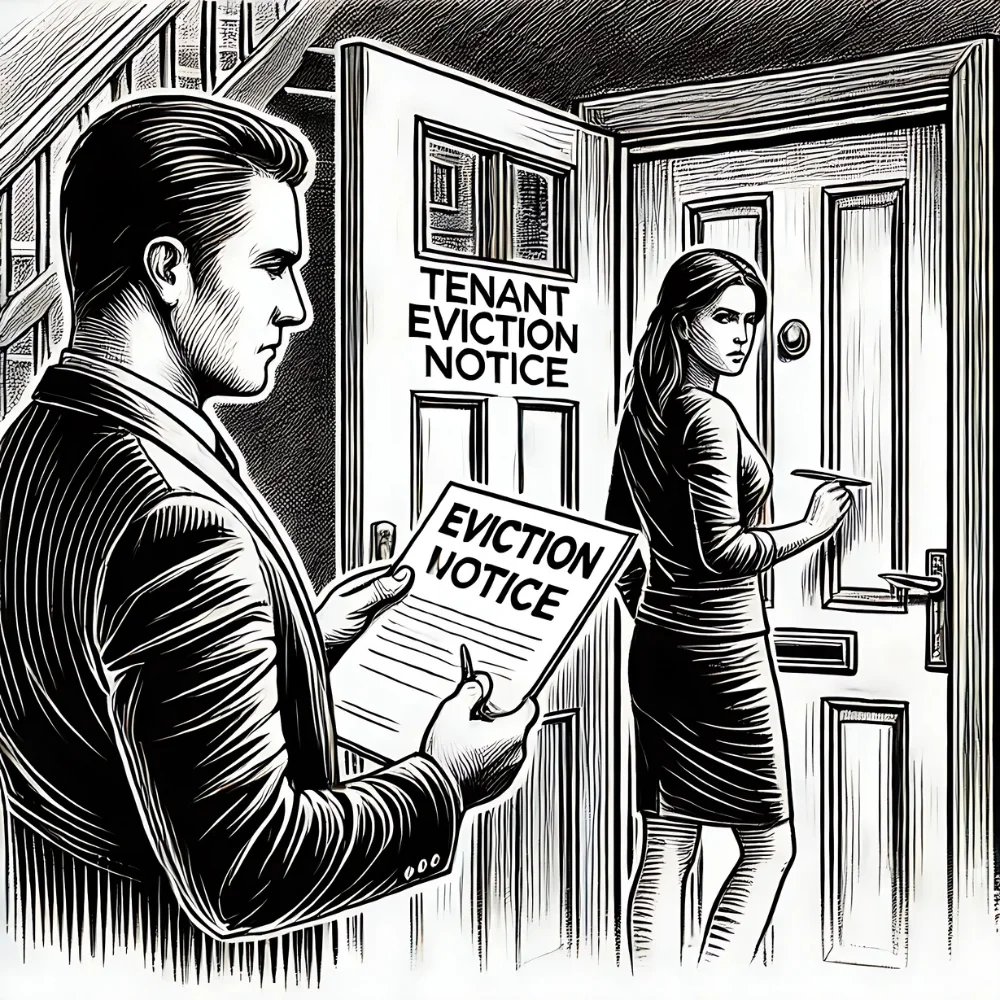How To Send Tenant Eviction Notice
Introduction to Eviction Notices
An eviction notice is a formal legal document issued by a landlord to a tenant under the provisions of the Bharatiya Nagarik Suraksha Sanhita (BNSS). It serves as an official request for the tenant to vacate the rental property within a legally defined timeframe.
Eviction notices are the first step in the legal eviction process and must adhere to the procedural requirements outlined in the BNSS.
Landlords typically issue these notices for reasons such as:
- Non-payment of rent
- Violation of lease terms (e.g., subletting without permission)
- Property damage beyond normal wear and tear
- The landlord’s need for the premises (such as selling the property or personal use)
A properly drafted eviction notice ensures legal compliance, protects the landlord’s rights, and provides the tenant with an opportunity to respond or seek legal assistance before further action is taken.
Understanding the Eviction Process
Renting a property is built on mutual trust between the landlord and tenant. However, certain situations may require a landlord to reclaim possession of the property for legally valid reasons.
Under the Bharatiya Nyaya Sanhita (BNS), eviction laws are structured to ensure fairness and transparency for both landlords and tenants.
If a tenant refuses to vacate despite multiple reminders, the landlord may need to initiate legal proceedings.
An eviction notice issued in accordance with BNS and Bharatiya Nagarik Suraksha Sanhita (BNSS):
- Formally notifies the tenant of the landlord’s intent to reclaim the property.
- Specifies valid legal grounds for eviction.
- Ensures compliance with tenancy laws to prevent disputes.
- Provides a structured legal process that protects the rights of both parties.
For a legally valid eviction, landlords must follow the proper legal procedures and allow tenants an opportunity to respond before further legal action is taken.
Legal Process of Eviction
Eviction is a formal legal process under the BNSS, allowing a landlord to lawfully remove a tenant from a rental property.
If a dispute cannot be resolved amicably, the landlord must issue a formal eviction notice to the tenant, specifying the reasons and legal timeframe for vacating the premises.
According to the BNS and BNSS, eviction laws ensure a fair and structured process, balancing the rights of both landlords and tenants while ensuring legal compliance.
Legally Valid Reasons for Eviction
A landlord can legally issue an eviction notice under the following circumstances as per BNS and BNSS:
- Lease Expiry: When the rental period has ended and the tenant refuses to vacate.
- Non-Payment of Rent: If the tenant fails to pay rent despite reminders.
- Property Damage: When the tenant causes significant damage beyond normal wear and tear.
- Violation of Lease Terms: If the tenant breaches rental agreement conditions, such as unauthorized subletting.
- Landlord’s Personal Use: If the landlord requires the property for personal purposes, in accordance with legal provisions.
Required Documents for Issuing an Eviction Notice
To issue a legally valid eviction notice, landlords must prepare the following documents:
- Rental Agreement: A signed contract outlining the terms and conditions between landlord and tenant.
- Property Ownership Documents: Proof that the landlord has legal ownership and the right to evict.
- Eviction Notice Copy: A written notice formally informing the tenant about the eviction grounds.
How We Assist in Bail Matters
- Confidential & Trustworthy Service: We maintain strict confidentiality of client information and legal documents.
- Expert Legal Guidance: Our legal team ensures compliance with BNS and BNSS to strengthen your bail application.
- Hassle-Free Process: We handle legal documentation and court formalities, streamlining the application process.
- Top-Tier Legal Representation: We connect clients with experienced criminal defense lawyers for High Court bail applications.










Reviews
There are no reviews yet.